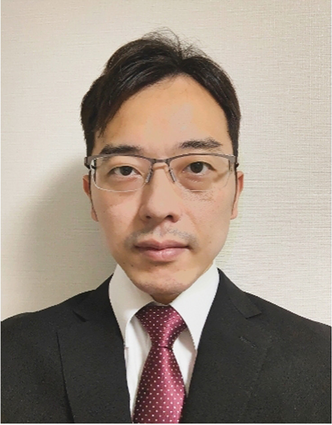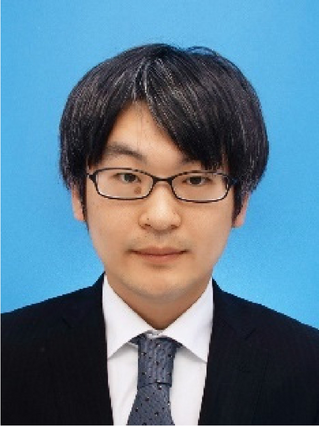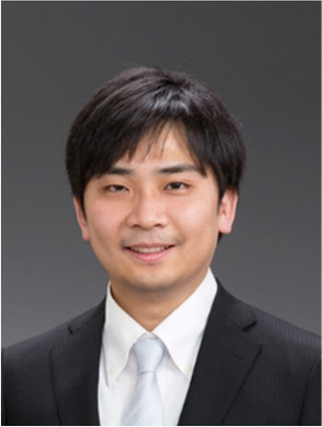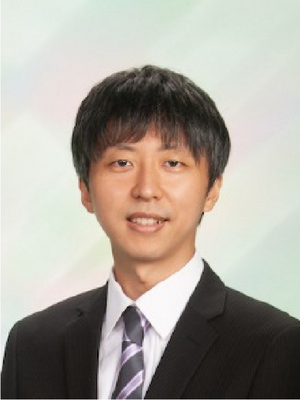Avoid common mistakes on your manuscript.
1 The Physical Society of Japan (JPS): The 2023 AAPPS-JPS Award by JPS
In order to promote research in physics in our region, the Physical Society of Japan (JPS) and the Association of Asia Pacific Physical Societies (AAPPS) shall jointly award the “AAPPS-JPS Award” to young JPS members who achieve outstanding research results.
The citations of the 2023 winners of the first AAPPS-JPS Award are listed below.

Associate Professor Hiroaki Ishizuka
Department of Physics, Tokyo Institute of Technology
Theoretical study on the novel transport phenomena in topological magnets
Dr. Hiroaki Ishizuka has achieved remarkable accomplishments as a young researcher in the field of theoretical studies on the transport phenomena in magnetic semiconductors and magnetic metals. In particular, he has built a solid track record in theoretical research focusing on quantum effects and physical property explorations. In his research on skyrmion materials, he discovered that the fluctuations of magnetism and multiple magnetic scattering in transport phenomena lead to non-monotonic temperature dependence of anomalous Hall conductivity. Furthermore, he theoretically demonstrated that this mechanism generates an extremely large Hall current in the strong coupling limit. In his studies on non-collinear responses (phenomena exhibiting asymmetric current-voltage characteristics, similar to diodes), he discovered the occurrence of electric chiral magnetic effects due to magnetic scattering. Additionally, he clarified that this non-collinear response is closely related to the vector chirality of the magnetic moments. Utilizing the aforementioned theories of magnetic scattering, Dr. Ishizuka succeeded in reproducing the peculiar temperature and magnetic field dependencies reported in experiments on anomalous Hall effects and nonlinear responses in pristine magnetic metals. His research results shed light on the previously unexplained physics of transport properties in magnetic materials that were known experimentally but remained theoretically unclear, and they are expected to have a significant impact. Moreover, his work opened new perspectives in the design of functional magnetic materials for spintronics, with potential applications such as magnetic devices utilizing magnetic fluctuations and isolated skyrmions.

Assistant Professor Hiroki Nishibata
Department of Physics, Faculty of Science, Kyushu University
Exotic structures of neutron-rich nuclei revealed by beta-decay spectroscopy for spin-polarized radioactive nuclei
The study of unstable nuclei is important for the systematic understanding of the nucleon system. It is critical for understanding astronomical explosive phenomena and nucleosynthesis in the universe. Dr. Nishibata has developed a new spin-polarization method to study unstable nuclei.
Dr. Nishibata’s spin-polarizing method is versatile; it is applicable to a wide variety of nuclear species. Using the method, Dr. Nishibata has discovered new levels of unstable nuclei and determined their spin and parity. Further studies of unstable nuclei are expected.

Planning Officer Koji Michishio
Research Planning Office, National Metrology Institute of Japan, National Institute of Advanced Industrial Science and Technology
Spectroscopy of positronium negative ions and its applied research
Positronium is a bound state of an electron and its antimatter counterpart, the positron, which further binds to another electron to form the positronium negative ion, which is one of the simplest three-body systems. Since this bound state is a three-body system and does not contain perturbations due to strong interactions, it is possible to perform highly accurate theoretical calculations using quantum electrodynamics. It is possible to search for new quantum phenomena through comparisons with experiments.
Dr. Michishio pioneered positronium negative ion research as a particle-antiparticle bound state and has been working on both basic and applied research. In his basic research, he first discovered an efficient method for generating positronium negative ions using a Na-coated tungsten surface. Next, a pulsed beam of positronium negative ions was produced by this generation method, and a cross-beam arrangement was developed to synchronize it temporally and spatially with a nanosecond pulsed infrared laser beam. Using this spectroscopic apparatus, he succeeded in observing photo-electron detachment and shape resonance for the first time. Furthermore, he found that the measured ground-state and shape resonance parameters and the electron affinity of positronium agree with the state-of-the-art three-body-system theoretical calculations. As applied research, he made it possible to generate a monochromatic positronium beam. He first created a pulsed beam of positronium negative ions, then accelerated it in an electric field, irradiated it with a laser beam, and desorbed it, thereby devising a method to obtain a monochromatic positronium beam. In an experiment, he succeeded in generating a single-energy positronium beam of up to 1.9 keV in an ultra-high vacuum. This result is expected to be applied not only to basic research but also to condensed matter physics.
Cooporative Researcher Yuto Minami
Accenture Japan Ltd., Data Science Consultant, Research Center for Nuclear Physics, Osaka University
Observation of Cosmic Birefringence in the Cosmic Microwave Background Polarization
The cosmic microwave background (CMB) may receive unknown effects from physics beyond the Standard Model and rotate its polarization plane before the photons are observed, as the photons have propagated since they were generated shortly after the Big Bang. A specific type of polarization change is called the cosmic birefringence. In order to measure its effect, one must subtract the effect of the rotation of the detector itself. Dr. Minami’s contribution is the development of a new method to perform this subtraction by measuring microwaves originating in the Milky Way at the same time as the CMB. The method is appreciated highly as it will become a basis for future CMB measurements.

Associate Professor Hayato Motohashi
Division of Liberal Arts, Center for Promotion of Higher Education, Kogakuin University
Construction of consistent scalar-tensor theories and exploration of new gravitational phenomena
Dr. Hayato Motohashi has made important theoretical contributions to the field of extended gravity theory. He investigated the conditions under which extended scalar-tensor theories have solutions to the Einstein equations as exact solutions, where the scalar field has a non-trivial profile with a constant kinetic term. Dr. Motohashi showed that such solutions, called stealth solutions, are generally strongly coupled and are inappropriate as models to explain reality without further modifications. Consequently, he has also shown that by introducing higher order derivative interactions, the issue of the strong coupling can be safely solved without introducing ghosts, which cause problematic quantum instabilities at low energy scales. Dr. Motohashi has also had achievements covering a wide range of research, including studies of extended theories of gravity and the analysis of inflationary universe models.
2 ICWIP2023 AAPPS Report by Srubabati Goswami and Vandana Nanal
The 8th IUPAP International Conference on Women in Physics (ICWIP2023), organized by the Gender in Physics Working Group (GIPWG) of the Indian Physics Association (IPA) and Tata Institute of Fundamental Research (TIFR), was held online from July 10 to 14, 2023. ICWIP2023, hosted by the Homi Bhabha Centre for Science Education (HBCSE) of TIFR, was inaugurated by Prof. A. K. Sood, the principal scientific adviser to the Government of India, where Prof. Jayaram Chengalur (director, TIFR), Prof. Arnab Bhattacharya (center director, HBCSE), Dr. S. M. Yusuf (IPA president), and Prof. Silvina Pons-Dawson (IUPAP president-designate) were present. In the inaugural speech, Prof. Sood emphasized the role of women in the advancement of science and society and suggested that mentorship programs for young women, flexible work policies for middle age groups, and leadership roles as well as significant research grants for senior women researchers will be a way forward. Prof. Rohini Godbole presented an overview of WiP in India, while Prof. Lilia Meza Montes, (Chair, WG5: women in physics working group of IUPAP) talked about the history of ICWIP.

Prof. Vandana Nanal (TIFR) and Prof. Shrubabati Goswami (PRL), co-chairs of the ICWIP2023 local organizing committee, together with Prof. Lilia Meza Montes (Chair, IUPAP-WG5), led the conference proceedings, where nearly 500 delegates from 70 countries, including about 200 participants from India, took part. A schematic presentation of the conference statistics is given in Fig. 1. It is noteworthy that ten AAPPS member countries were represented in the conference.
The conference program included plenary and keynote talks, interactive workshops, panel discussions, and a session on resolutions. An important feature of the conference was the presentation of country posters, depicting progress and new activities related to gender in physics. Participants also presented posters (~120) on various topics, including contemporary physics research, and gender in physics and physics education. The poster sessions on the frame platform were particularly appreciated by the participants. For the first time, the best poster awards (sponsored by IOP Publishing, UK) were given at the conference.
The keynote talk was given by Prof. Karen Halberg (recipient of the 2019 L’Oreal-UNESCO International Award For Women in Science, Latin America) on “Quantum Condensed Matter: A Playground for Emergent Phenomena and Complexity and why I am passionate about this field,” and the session was chaired by Prof. Prajval Shastri (Vice-chair, IUPAP-WG5).
The plenary talks presented an overview of some of the latest developments in quantum computation, astronomy, collider physics, laser and plasma physics, and climate education. Dorothy Gordon (board member, UNESCO) talked about the danger of the stochastic parrot problem (i.e., generating language without understanding) in the context of artificial intelligence. Discussions also touched on geographical and gender biases in publications and measures to overcome these issues. Studies related to institutional racism and sexism were presented. A panel discussion on COVID-19 and its aftermath, especially on women, was held. Participants had the opportunity to interact with eminent women scientists and social scientists in workshop sessions on physics education, data analysis, intersectionality, leadership, and development (Fig. 2).
A documentary on the Giant Meterwave Radio Telescope (GMRT) of TIFR, IUPAP’s centenary celebration and the Nobel lectures of two women physicists, Donna Strickland and Andrea Ghez, were shown to the participants. Deliberations in social and networking sessions highlighted the need to create a repository of various resources and avenues. It was also suggested to create handbooks of best practices. A presentation was made on HBCSE’s Vigyan Pratibha, a science education project aimed at promoting talent among students, which generated extensive interest.
Regional Women in Physics (WiP) meetings were also held during the conference. The AAPPS-WiP meeting had a detailed discussion on its present activities. Suggestions for widening its reach and a resolution regarding a future course of action were made.
To celebrate women physicists, a novel feature was introduced in this online conference. The sessions were held in various halls, named after women scientists. For details, visit the Hall of Fame of ICWIP2023.
The conference also showcased a rich heritage of Indian dance art. Participants had the opportunity to observe a Bharatnatyam (classical dance) recital by Dr. Sharada Srinivasan and to watch the Sattriya dance by Dr. Pratibha Sharma and Bihu dance (folk dance of the north-eastern state of India, Assam) by Mousumi Bora and group.
Recommendations emerging from the discussions included the creation of hybrid meetings for wider access and enhanced networking, focused programs for mentoring, targeted support for developing countries, showcasing the scientific achievements of women, the establishment of resource sites for dissemination of information, and creating and maintaining a gender balance in decision making bodies. It is further suggested that gender awareness workshops be made mandatory by academic institutes.
2.1 Satellite events in India
Utilizing the ICWIP platform, several events have been planned in India throughout 2023 in order to generate widespread awareness. Included are the Pavinari lecture series (showcasing works of women scientists), a panel discussion on “Are MCQ (multiple choice question) tests gendered?” held in ShivNader Institute of Eminence (Delhi NCR) and an interactive session at Gitam University, Hyderabad, on “Teaching Physics Effectively Online.”



Additionally, the workshops organized by Indian team members on combating biases and equity in digital space were timely as they highlighted the challenges experienced by physics communities in India and abroad. Discussions further emphasized the global nature of the problems related to online teaching and underscored the need for mitigating these issues in order to achieve equitable growth.
In summary, as pointed out by Prof. Nathiel Brown, diversity contributes to excellence in science and equity is a collective responsibility.
We are grateful to Prof. Lilia Meza Montes for her guidance and valuable help in making the conference successful. We also sincerely thank IUPAP-WG5, the local advisory committee and the local organizing committee of ICWIP2023, for their support. In addition to the registration fee, financial support was received from TIFR, IPA, and NISER (the National Institute for Science, Education and Research).
Please visit the conference website for further details. The plenary sessions are available on the YouTube channel https://tinyurl.com/ICWIPPLENARY.
Author information
Authors and Affiliations
Consortia
Contributions
The author read and approved the final manuscript.
Ethics declarations
Competing interests
The authors declare that they have no competing interests.
Additional information
Publisher’s Note
Springer Nature remains neutral with regard to jurisdictional claims in published maps and institutional affiliations.
Rights and permissions
Open Access This article is licensed under a Creative Commons Attribution 4.0 International License, which permits use, sharing, adaptation, distribution and reproduction in any medium or format, as long as you give appropriate credit to the original author(s) and the source, provide a link to the Creative Commons licence, and indicate if changes were made. The images or other third party material in this article are included in the article's Creative Commons licence, unless indicated otherwise in a credit line to the material. If material is not included in the article's Creative Commons licence and your intended use is not permitted by statutory regulation or exceeds the permitted use, you will need to obtain permission directly from the copyright holder. To view a copy of this licence, visit http://creativecommons.org/licenses/by/4.0/.
About this article
Cite this article
AAPPS Bulletin. News and views (9&10). AAPPS Bull. 33, 24 (2023). https://doi.org/10.1007/s43673-023-00096-1
Published:
DOI: https://doi.org/10.1007/s43673-023-00096-1



